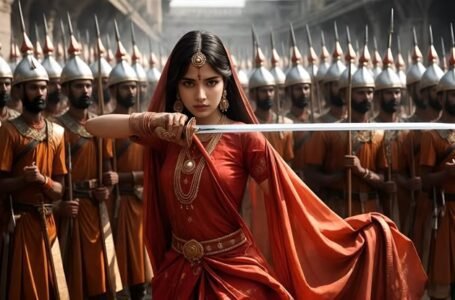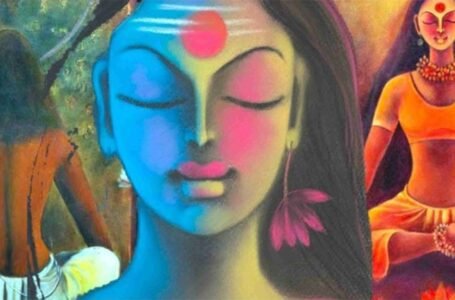The Golden Age of Innovation: Renaissance Art and Its Legacy

Do you know why artists like Leonardo da Vinci, Michelangelo, and Raphael are famous?
They are well respected due to their unique style and ability to challenge the status quo in art form. By the beginning of the fifteenth century, there was a revival of interest in the classical art and literature of ancient Greece and Rome. This interest began in Italy, and scholars and artists began to turn to non-religious subject matter for inspiration. The period in which these events took place is called the Renaissance. The word means “rebirth” and refers to the renewed interest in the classical creations that inspired it.

Why did this movement come about
Trade and commerce
European nation where actively seeking new land and travelling around which lead to the growth of trade and commerce which further lead to a rise of wealthy city-states such as Florence, Venice, and Milan. Commerce enabled families like the Medici in Florence to act as patrons of the arts. Patronage provided financial support for artists, architects, and scholars, facilitating groundbreaking works. These cities became cultural and economic hubs, fostering a competitive spirit among wealthy patrons who supported art, architecture, and learning.
The fall of Constantinople in 1453 led to an influx of Greek scholars and manuscripts into Italy, bringing forgotten classical texts and ideas. European scholars began studying ancient Greek and Roman works, rekindling interest in philosophy, science, literature, and art. This revival of classical antiquity gave birth to Humanism a key movement of the Renaissance that emphasized the value of human achievement and the study of classical languages, history, and ethics.

Humanism
Humanism is movement , during that period , where there was a shifted focus from the divine and supernatural to human experiences, achievements, and potential.
Scholars like Petrarch also known as the “Father of Humanism and Erasmus championed the study of humanity through history, literature, and art.
Humanism encouraged artists and thinkers to explore human emotion, anatomy, and the natural world, influencing works in art, literature, and science.
Innovations in science and technology
Renaissance saw the invention of the printing press by Johannes Gutenberg which revolutionized the spread of knowledge. Books became more accessible and affordable, disseminating classical texts and Renaissance ideas across Europe.
Figures like Leonardo da Vinci** and later **Galileo** embodied the Renaissance spirit of curiosity, merging art, science, and technology.

Weakening of the Church’s Authority
Events like the Great Schism and corruption within the Church weakened its authority, leading to an environment where secular and individualistic ideas could flourish.
While religion remained central, Renaissance thinkers explored ideas outside strictly theological frameworks, blending Christian and classical traditions.
Plague
The Black Death led to significant social and economic changes, including labour shortages that shifted power from the aristocracy to the middle class.
The trauma of the plague also inspired people to focus on life’s potential and the beauty of the human experience.
Early high and late renaissances
The Early Renaissance (14th–15th Century): Birth of New Ideas
The Early Renaissance emerged in Italy, particularly in cities like Florence, where wealthy families, such as the Medici, played a crucial role in supporting the arts and learning. This period marked a clear departure from the rigid religious focus of the Middle Ages, with a renewed interest in the classical ideas of ancient Greece and Rome. Humanism, an intellectual movement that emphasized the study of classical texts, human potential, and individual achievement, was at the core of this cultural rebirth.

Artistic Innovations:
One of the most important innovations of the Early Renaissance was the development of linear perspective, which allowed artists to create the illusion of depth and three-dimensionality on a flat surface. Filippo Brunelleschi, an architect and engineer, is often credited with the discovery of linear perspective, which would later revolutionize painting. Giotto di Bondone, a painter whose works like The Lamentation are known for their emotional depth and naturalism, broke away from the flat, symbolic style of medieval art. His figures were more lifelike and expressive, setting the stage for more realistic depictions of the human form.
Key Figures:
- Giotto di Bondone: Often considered the first of the Renaissance painters, Giotto’s frescoes in the Scrovegni Chapel in Padua are revered for their emotional depth and naturalistic approach.
- Donatello: A sculptor whose work, such as the bronze statue of David, reintroduced the freestanding nude sculpture, reviving classical traditions.
- Masaccio: A painter who utilized the principles of linear perspective and light and shadow to create depth, particularly in his frescoes in the Brancacci Chapel.
- Filippo Brunelleschi: An architect who designed the dome of the Florence Cathedral, a masterpiece of engineering that was a symbol of Renaissance innovation.
The High Renaissance (Late 15th–Early 16th Century):
The High Renaissance represents the peak of Renaissance art, characterized by a mastery of form, proportion, and emotion. This period saw the flourishing of some of the most famous and influential artists in history, with their works reflecting an idealized vision of human beauty and perfection.

Artistic Achievements:
During the High Renaissance, artists pushed the boundaries of realism and technique. The use of sfumato (a technique of blending colours and tones to create a soft, smoky effect) and chiaroscuro (the use of strong contrasts between light and dark) became more refined, allowing for a more naturalistic portrayal of human figures and landscapes. The period is known for its monumental works that were often commissioned by powerful patrons, including the Catholic Church and wealthy rulers.
Key Figures:
- Leonardo da Vinci: A polymath whose works, including The Last Supper and Mona Lisa, exemplify the Renaissance ideal of combining science and art. Leonardo’s studies of anatomy, light, and perspective made his works among the most technically advanced of the era.
In The Last Supper, Leonardo da Vinci used linear perspective to emphasize Christ as the focal point, with all architectural lines leading to Him. Christ’s calm demeanour contrasts with the apostles’ emotional reactions to His announcement of betrayal. Judas, positioned at Christ’s right, is marked by a shadowed face, signalling his spiritual separation from the others. Leonardo crowded the apostles on one side of the table to heighten the scene’s dramatic impact, breaking tradition by placing Judas among them, highlighting his internal isolation.
In Mona Lisa, Leonardo showcased his perfectionism, capturing the human form with remarkable realism. Using techniques like sfumato, he created a soft, mysterious effect around the subject’s face. The portrait, which Leonardo never fully completed, exemplifies his constant pursuit of artistic excellence and psychological depth.
- Michelangelo Buonarroti: A sculptor, painter, and architect.
Michelangelo was initially commissioned by Pope Julius II to design a grand tomb for the pope, which was to include 40 figures. However, due to budget constraints, only the statue of Moses and a few figures of slaves were completed. As the project changed direction, Pope Julius II assigned Michelangelo the task of painting the ceiling of the Sistine Chapel instead. The chapel’s ceiling was approximately 40 feet wide and 133 feet long, previously decorated with stars on a dark blue background. Michelangelo protested this new task, as ceiling painting was considered less prestigious than wall painting, and he also saw himself as a sculptor rather than a painter.

Despite his protests, Michelangelo eventually agreed to take on the challenge. The immense scale and difficulty of the project, combined with the high position of the ceiling, made it seem an overwhelming task. The result would be one of the most famous artistic achievements in history.
- Raphael Sanzio: Known for his harmonious compositions and idealized depictions of the human form, Raphael’s works, such as The School of Athens, epitomize the Renaissance celebration of human knowledge and classical thought.
- Titian: A Venetian painter is known for his innovative use of colour and texture, as seen in works like Assumption of the Virgin, which displayed rich, vibrant hues that became a hallmark of Venetian art.
This period was characterized by relative peace and prosperity in Italy, particularly in Florence, Rome, and Venice, where artists enjoyed patronage from both the church and secular leaders. The intellectual climate was also conducive to artistic innovation, with scholars rediscovering and translating ancient Greek and Roman texts, which further fueled the humanist movement.
The Late Renaissance (1520s–1600): Mannerism and Emotional Expression
The Late Renaissance, also known as Mannerism, marks a departure from the idealized proportions and balanced compositions of the High Renaissance. The term “Mannerism” itself refers to an exaggerated, stylized form of art that emerged as a reaction to the harmonious and classical principles of the previous period. Artists of the Late Renaissance sought to express emotion, complexity, and individualism, often favouring distorted forms, asymmetry, and unnatural colours to convey a sense of tension and unease.

Artistic Shifts:
Mannerism was characterized by elongated figures, complex compositions, and vibrant, often unnatural colour schemes. The use of space became more ambiguous, and figures were frequently depicted in poses that conveyed emotional tension, rather than the calm, balanced poses of the High Renaissance. This period also saw a shift toward more personal, subjective interpretations of religious and mythological subjects.
Key Figures:
- Parmigianino: Known for his elongated figures and the dreamlike quality of his paintings, such as Madonna with the Long Neck.
- Pontormo: His works, like The Deposition from the Cross, are marked by dramatic compositions and exaggerated, almost contorted figures.
- El Greco: A Spanish painter who fused Renaissance techniques with his own spiritual and emotional expression, producing works like The Burial of the Count of Orgaz.
- Tintoretto: A Venetian painter who embraced dynamic compositions and dramatic lighting in works like The Last Supper, breaking from the serenity of High Renaissance art.

The Late Renaissance coincided with the social, political, and religious upheavals of the Reformation and Counter-Reformation, which contributed to the emotional and intellectual tension reflected in the art. The rise of Protestantism, coupled with the Catholic Church’s responses, led to increased religious polarization and created a more turbulent cultural environment.
Conclusion
The Renaissance remains one of the most significant periods in Western history, shaping the development of modern art, science, and philosophy. The innovations of this era in perspective, human anatomy, and artistic technique laid the groundwork for future artistic movements, and the intellectual contributions of humanism, along with the rediscovery of classical antiquity, influenced subsequent generations of thinkers, writers, and artists. The Renaissance’s emphasis on individual potential, the pursuit of knowledge, and the blending of art and science continues to resonate in contemporary culture, cementing its place as a pivotal moment in the history of Western civilization.


